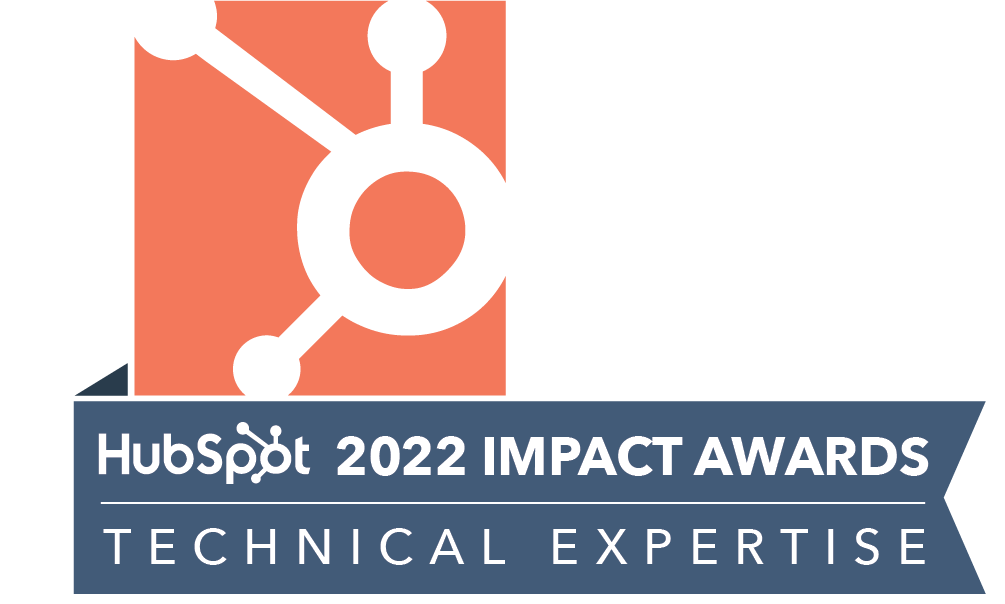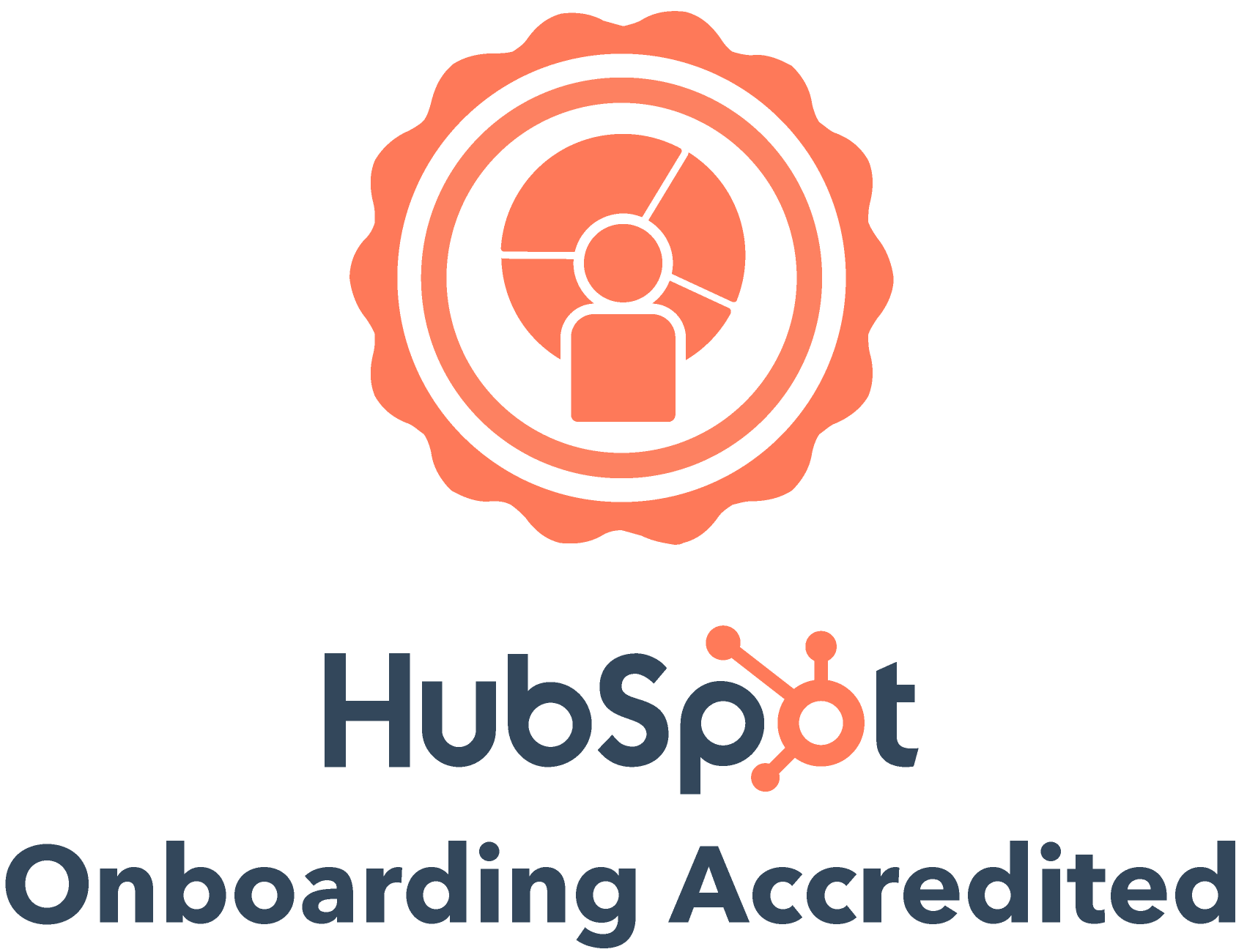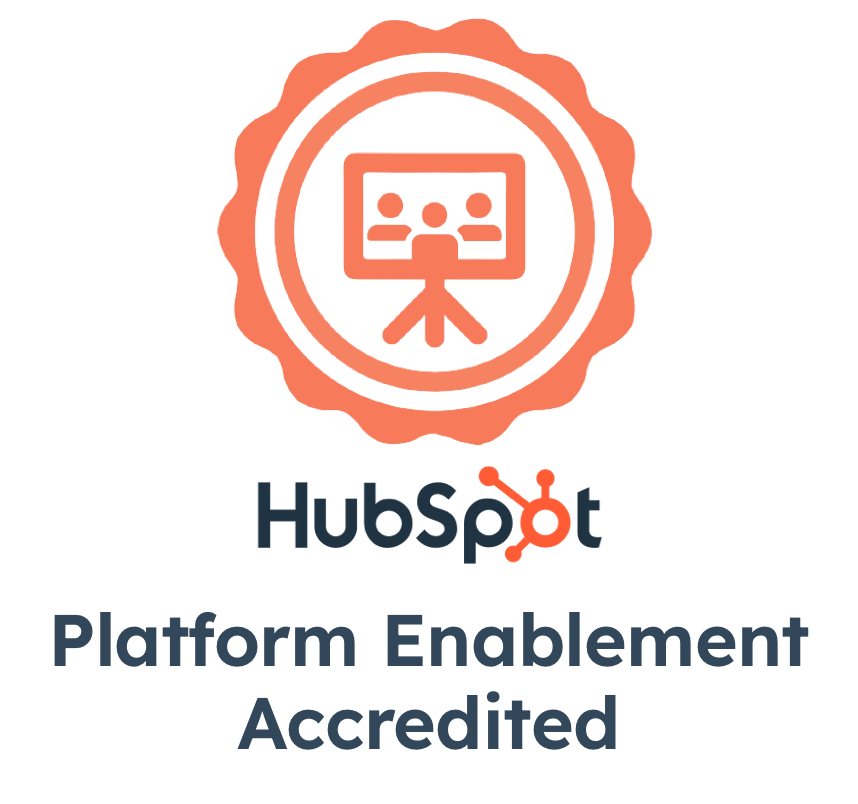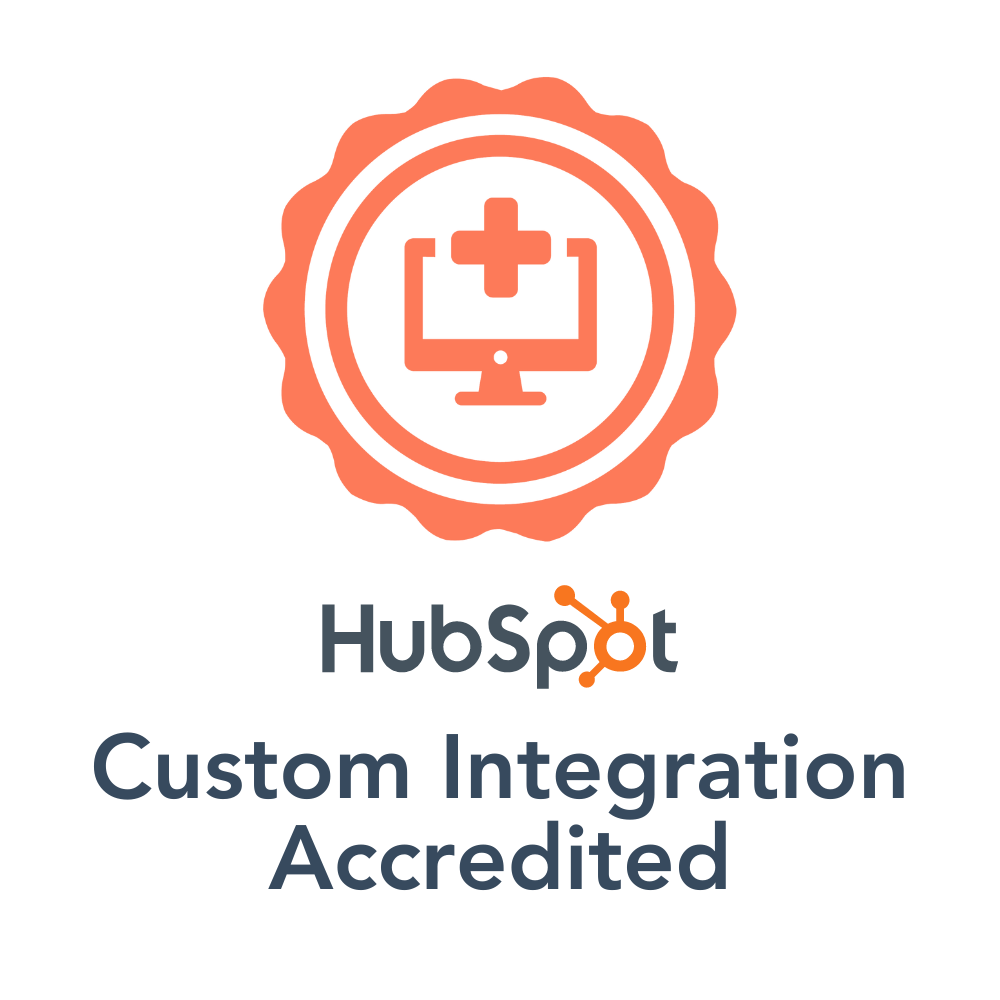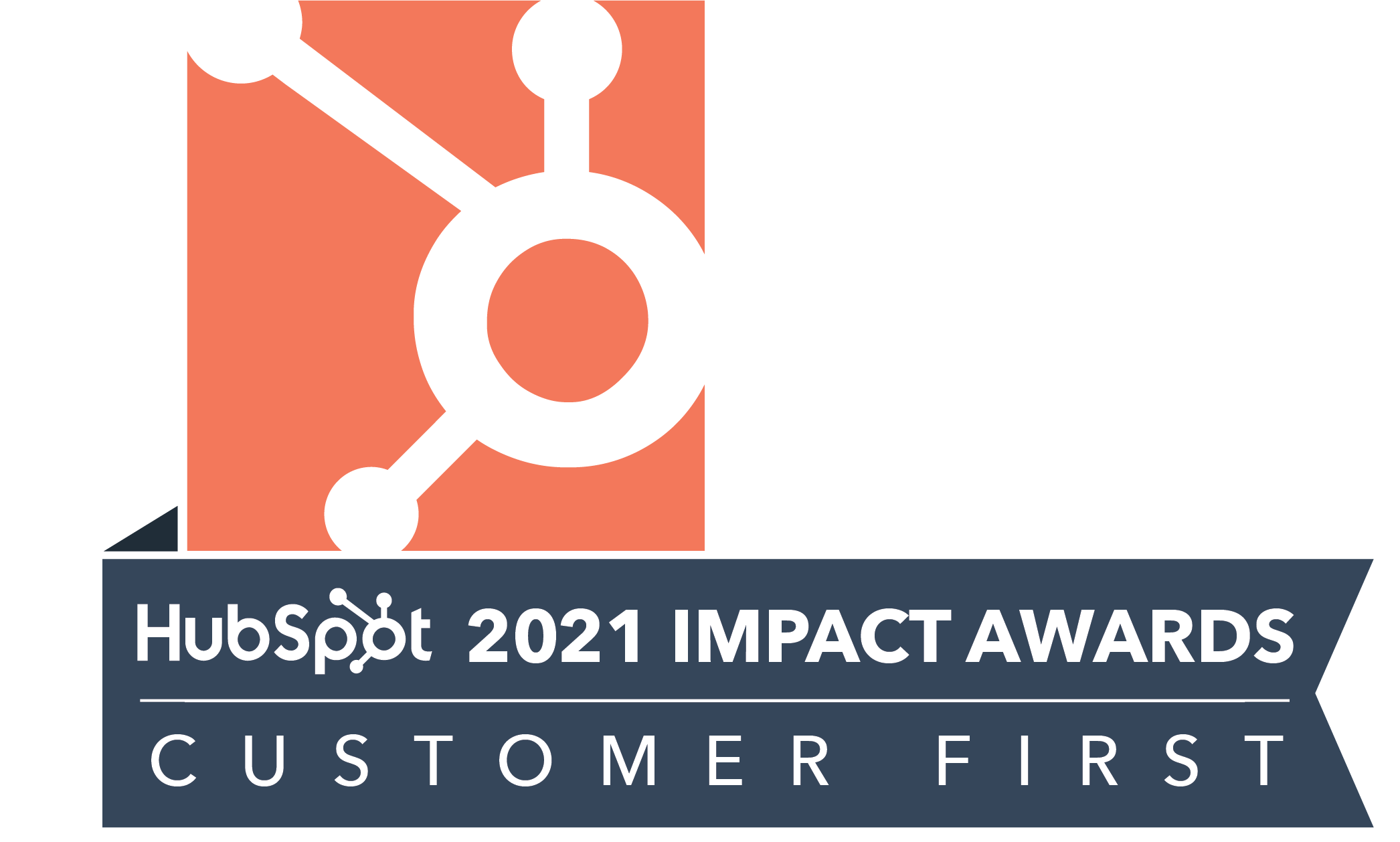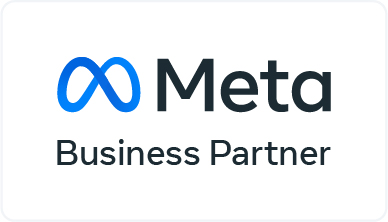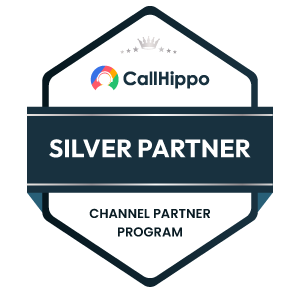This episode gives us a view of the martech landscape from the POV of the innovators, the ones who dream up and deliver the powerful tools and platforms that we use to drive growth.
We look at two interesting martech tools that can expand your martech stack's capabilities and help you build a strong revenue engine. And the stories of the entrepreneurs who brought them to life.
Let's get started👇👇
Listen on Spotify >>
Panelists:
- Sridhar Ranganathan, CEO & Co-founder, B2Brain
- Sujit Zachariah, CEO, Delve AI
- Suma EP, Co-founder, Niswey
Timestamps:
- 00:00 - Episode and panelist intro
- 02:25 - Sridhar’s journey with martech entrepreneurship & B2Brain
- 06:58 - Why account intelligence is crucial to sales success
- 09:48 - Automated account research integrated with your CRM
- 14:51 - Sujit’s journey with martech entrepreneurship & Delve AI
- 19:21 - Autonomous marketing driven by data - that’s the future
- 23:38 - Humanising data for advanced insights
- 26:35 - Selling software vs. selling business transformation
- 30:06 - Products are fore people, tech is for machines
- 33:00 - Operating in silos - are we ever going to solve that challenge?
- 37:08 - How businesses are expanding the powers of their CRM with AI and data
- 58:07 - How should CXOs operate in the era of AI-everything
- 1:08:37 - Concluding thoughts - “What are you most excited about?”
Transcription
Sridhar: Like Sujith and I overlapped at Yahoo, right? Prior to that, I was at Zoho. And after Yahoo, I joined InMobi, or which called mKhoj back then, one of the biggest mobile advertising networks now as a VP of product and built the product UX data science teams several years, like roughly 16, 17 years ago. And We continued to grow very fast, literally like a rocket ship, right? I joined when we were eight, and in about four years, we were 800 plus.
So tremendous growth and saw through the CBNC funding and all that stuff. And at some point in time, I kept playing around with some some thoughts and ideas of like, big tech companies and stuff like that. My co-founder, Karthik Madhavan, he also worked with me at Inmobi. We know each other from college, several years, like a few decades, last century onwards, right? Just makes it sound like we've been living for a very, very long period of time.
Suma: Yeah...we know that time.
Sridhar: Nice. So we kept toying with an idea and we just came out of the, we came out of Inmobi, both of us, like, you know, just crossed 40. Single income, two kids, you know, families. And that's why I said very atypical and said, okay, we're going to do something because after a few years, you look back, you want to have accomplished something, build something. And hopefully, you can look back fondly and inspire the kids around saying, okay, you can also choose a path, right?
Nice. So we kept toying with an idea and we just came out of the, we came out of Inmobi, both of us, like, you know, just crossed 40. Single income, two kids, you know, families. And that's why I said very atypical and said, okay, we're going to do something because after a few years, you look back, you want to have accomplished something, build something. And hopefully, you can look back fondly and inspire the kids around saying, okay, you can also choose a path, right?
So it was very not like, okay, I saw a problem, I want to go and build a company, I want to build a product, nothing of that sort. You want to do something, you get on a journey and said, okay, we'll go where it takes us and figure out life on the way. So we started Credibase. It was designed to be a business graph for the world that connected people, companies and all the relationships amongst them and so on and so forth.
We tried a bunch of things, even raised seed funding from NEM and Low Ventures and a few other angels in Silicon Valley, fairly accomplished people and like fantastic backers and so on. But as luck would have it, we never hit product market fit. We toyed with several ideas over like a six and a half, seven year period and didn't hit product market fit. So, and all the ideas were in the intersection of sales and marketing for B2B.
So, in a sense, that was the world we were playing. We were not playing anywhere else. We didn't branch out into completely orthogonal or new areas, just playing in that space. At one point in time, when we had run out of seed money, we continue to invest our money in the company and stuff. Thankfully, the team continued to stay with us. The team were all very charged and very excited to kind of try different things.
Never a dull day in a startup. We saw this particular problem where we would see SDRs doing a whole lot of research, despite having several tools across CRM and data and all of that stuff. And we said, depending on the nature of the business you are in, you are looking for specific insights from every company you're going after. So if you change the business, you look for different insights. If you're selling supply chain, you look for some things.
But if you're selling, you know, cybersecurity, you look for something else. And if you're selling HR tech, you look for some other insights across every company you want to sell to. So that was our light bulb moment saying, if we could automate and make this available to you, you don't need to go to Google and LinkedIn and stuff and do all this search. Because every time you switch out of your CRM and go to Google or LinkedIn or charge To come back, you're going to lose about of context 20 switch time, which is crazy.
So we said, we will run automation in the back end to understand all accounts that you are working with. We understand the business that you are in, our systems understand, and figure out the most relevant insight per company and give it to you inside your HubSpot or inside your Salesforce or wherever. That was like, you know, the brain that did the grunt work for your B2B business, therefore B2Brain.
That was the story, right? So it's been about three years since we kind of pivoted, built a new company, new investors, IdeaSpring Capital and Arca Ventures and a few other engines, a lot of operators from the ecosystem, a bunch of founders and so on. And we also figured like there was an iterative process when we nailed who we think is our ICP. It's actually vertical SaaS companies that are selling business software to core industries like oil and gas, manufacturing, construction, logistics, supply chain, healthcare, pharma, period.
It's only these businesses, right? It's only these vertical SaaS, vertical AI companies that sell to these industries that are our core customers, right? So we only focus on them, predominantly focus on North America as a market. We do have some Indian customers who are also selling only to North America. Even their sales motion looks like how you would sell in North America. So that's the, that's the journey.
Suma: Okay. That's very interesting. So how did you arrive at the verticals?
Sridhar: So, uh, we basically, uh, learned that, uh, the nature of how people do research is different depending on the kind of product you are selling, the price point at which you are selling and the market you're selling. So if you're selling to very digitally savvy people, You're selling to IT or marketing or sales. Okay, they are very online friendly. They are very digitally sophisticated. So they will do their kind of research to figure out evaluate like their evaluation metrics are very different, very sophisticated.
So you need a certain kind of data to kind of make a mark with them. A lot of intent data tools exist, right? But if you are going to a manufacturing plant director somewhere in the U.S. Midwest and trying to sell a more sophisticated application on top of their ERP to make their process automation much more streamlined, you have to speak their language. You have to speak the context of what plant issues and manufacturing challenges they might be going through.
Okay, which means as a salesperson, you must have knowledge of their industry, their company, which is very different from saying somebody from some company visited my website and my pricing page, that person is not going to come to your website, you're going to show them how will your solution change the day in the life of their team. Okay, so you need that acumen to be built. And the insights from b2brain give you those sort of talking points about that company.
As to what's happening in their world, what sort of strategic initiatives are they taking, what are the areas where they are investing their capital behind to operate their business more efficiently. And it gives those talking points, which you can, it's easy for you to look at them, distill and say, okay, my light bulb goes off, I know how to pitch. That's the, yeah.
Suma: so is is the data otherwise not available or very difficult to find what is this data that neither it's available?
Sridhar: It's available there's no proprietary data b2brain has okay there's no behind paywall and stuff right yeah if you had to go and find it You will on an average spend between 30 to 45 minutes going through multiple sources to get and call out and generate insights for one company. As a sales rep, you have between 50 to 75 companies to work with. So that's about a week of a month that you'll spend. If you want to spend that, by all means you should. But if you are a rep who's being paid $150,000 per year, and you spend a fourth of your time.
I don't think the company really likes it that you're spending $37,000 of your salary on Google search.
Right. And your information becomes tribal knowledge. If you leave, salespeople churn. If you leave, it goes with you. Right. Not there with the organization while the company has to manage the customer life cycle for like five years.
Right. We're not manufacturing anything new. We're just making life much much easier and making the salesperson much smarter and more informed about their market. That's all we do. Just what Google did for you, right? All the information you have on Google is also accessible outside of Google. It's nothing new. They just made it easier for you that it became second nature. So we want to become second nature to somebody opening the CRM, expecting insights about a company and it being available there.
That's all we want to do.
Suma: Very, very insightful for a salesperson. So making a salesperson's life so much easier. And your product integrates with CRM's?
Sridhar: Yes, it integrates with the CRMs our market uses. So we integrate with Salesforce, HubSpot, Outreach, SalesLoft, which are a big portion of a salesperson's life today, especially on the top to middle funnel. And then it integrates with Slack, MS Teams, Freshworks CRM, Zoho CRM. That's all at the moment. And we keep looking at are there new platforms and products this ICP of ours uses, in which case we prioritize that in our roadmap.
We are available on Google Chrome store as a Chrome plugin and in Salesforce AppExchange as a native app and in Slack AppStore as a Slack app and MS Teams app directory as an app. And recently we also integrated with SalesLoft via an API as part of the Rhythm UI that they have launched, which reads signals from multiple sales tools and recommends the next best action to the rep when the rep opens the SalesLoft UI.
So here's also going to be one more information signal.Account intent shows up. So for example, you might say, you know, you sent a video, somebody saw it. Okay. And here's a new intent coming out of B2Brain for the same company. They've just done a deal or a partnership with someone.
And then you sent a proposal to them. We are DocuSign. They've opened it three times. So now here is the next step that you could do.
Suma: Oh, that's another level altogether then.
Sridhar: Correct. Yeah. So that's, that's the, that's the direction that like we really want to, we think of ourselves as literally like the brain of the B2B side brain of a rep, right? It does all the grunt work, all the homework in the back end, gives you insights where you need it, doesn't hog the limelight.
You never see your brain, but you're all the time functioning only because of it like that. Okay. Quietly working behind the scenes.
Suma: Okay. Let's go to Sujith. Sujith, do you have any questions for Sridhar though?
Sujit: No, it was very interesting how he zoomed in on the ICP in terms of that's typically the challenge that most startups have, including us, as we go through the startup journey. And the fact that he's been able to nail it down to specific sizes and geographies, it clearly shows that the product fit motion is going pretty well. Something that a lot of startups aspire for. So congratulations to the team.
Sridhar: Thank you so much. I will take all the best more than a congratulations. Because yeah, sure. Yes, that as well. It did take us to be honest, it took us about 18 to 19 months. So it's right now. Everyone figures it out in different ways. We just figured out this. Thank you.
Suma: So did you want to go next? What's your story?
Sujit: What's my story? Okay, so After my grad school in the US, I did my PhD in an intersection area between computer science and semiconductors, so it was more computational geometry for VLSI CAD. I actually was working with Intel for a long, for about nine years, most likely in a research-like role. But while being there, I often felt that there are so many other problems to be solved, especially the data intensive ones.
And there was always this this desire to essentially be able to do something on my own, you know, this work on some of the ideas that I had, and make a difference. And I figured probably semiconductor industry is not the right place to be. To try something on your own, at least then. Maybe now it's quite different. You can do innovation there as well. And that was the starting point. So I actually took a break from work, went back to full-time business school and took two years of my time, did my internship at Gartner, looking at research in general, areas, domains, what's coming up, what's hype cycle, what is all the terminology that's being used, learned all of that.
Essentially, you know, zoomed into internet and mobile space after graduation. That's when I joined Yahoo after that, first in the US and then spent a little bit of time here in Bangalore as well. But in all this, the effort was to try to understand what it takes to become an entrepreneur. What does problem solving look like, What is the right way to go about understanding a market, its needs, building a business, and so forth, which coming from a purely technical background, something that I was lacking.
So that problem statement stayed in my mind for a while. But then I went on to start a first startup, which is in a different space, another problem statement that came up with the advent of internet and e commerce in India, specifically with Flipkart and Amazon coming in India, they were offline retailers, again, the small businesses that were on the roads, you know, basically, because their lives was that, you know, their income was at stake.
So at that point, the We thought we could help those stores with digital channels and essentially what we call as the online to offline space, essentially enabling retailers to benefit from online channels, driving footfall from digital channels. We did fairly well there. Lot of the brands in India when using it and so forth. Personal side, I had to take a break because my dad was unwell. So after he passed away, you know, got back to thinking of the problem statements that we had and that was a time my now co-founder, he was also my colleague at Yahoo, we had come back from US to India.
So we got together and we looked at this problem statements and this one came back to our mind again. Hey, there is businesses with a lot of data and how can we make it beneficial to them? So we started this company called Dell AI. Our vision was quite big at that time for where it was at that time. This is around four, four and a half years back, free chat, TPT, and so forth. So our vision, original vision, and still remains the same is to drive autonomous marketing for small businesses.
So our end goal is to drive marketing that runs on its own in a data driven manner for businesses of all sizes. So we split that journey into three phases. The first phase is where businesses using their own data as well as all the data available in the public domain would automatically be able to get a detailed understanding of their ideal customer profile or their target buyer. And we wanted it to be purely data-driven with no human biases involved and so forth.
So that's the origins of our current first offering. It's called Persona by Delveya. But that's just a starting point, the whole idea being the machine needs to understand who your buyer is before it can help you get more of them. So the next phase where it gets more interesting is when it becomes actionable, right? Now, since the machine knows who your ideal customer is, can you tell me how I can get more of them?
Each month, can you tell me the top five activities that I need to do this month so that I can get more of them and so forth? So we have a full-on product coming up shortly. It's called the Advisor by DataVI. Which would make recommendations in terms of giving you a vertical, given its understanding of what your offerings are, who your ICP is, what you need to do and so forth. So we're quite excited about that phase because it moves from just understanding to actions.
You still have to do it on your own, it's a do it yourself, the recommendations have to be acted on on its own. But what we are hoping for is good feedback with respect to these recommendations and Where it will get to the third stage, which is the autonomous part, is if we get good feedback, thumbs up with a good chunk of the recommendations that we make, then rather than tell you to do it, there'll be at least 80% of which can be done for you by AI.
There'll always be the human element, the human in the loop that will review it, give it feedback, tweak it, and so forth. But that is when it gets to the autonomous part. So that's our journey, where we want to get to. Moving from phase one to phase two in our journey.
Suma: Very cool. So a couple of things.
One, there is a Yahoo mafia happening here.
And the other thing that, you know, the fact about the autonomous marketing, it's something, you know, we have also tried and failed that very long ago. Started building a product called, which is named after the company that we run in IO. So that was an SEO sort of tool. And it would read your content and tell you if you were using the right keywords and what keywords should be used.
What's the rating, you know, along various parameters and things like that. Basically, it was like you log in and you should be able to know what is the content you need to produce and here are the keywords and, you know, some sort of, you know, some machine reading and all of that was happening to enable all of that. Yet, we didn't find the product market fit for it. Okay, this was 2015 and SEO market was, and it's still run by Moz and SEMrushes of the world.
And I didn't think we couldn't figure out who we were selling to. Were we selling it to the small businesses who did not have a marketing team? Or were we selling it to agencies? We couldn't figure that out. And it kind of finally bombed. But the idea was the same, that how do you help these small businesses with how to get to the level playing that they've got? How to leverage that? So yeah, some similar ideas there that was coming up.
Sujit: Yeah, and the unique insights that we have leveraged is so far all the efforts around presentation of data around dashboards right we have all the data we will, we will, you know, bring to the top, the top metrics that have changed and so forth. What we have done is essentially moved away from numbers to humans, which is we don't show any numbers on our dashboard, right? If you want, you can look at them.
But the idea here is we are presenting it as people. That was a big insight that we got that while we have so many channels, so many data sources, all of these happenings, how does a small business owner who has limited time imbibe all of that data? And we thought we would look at it from a different formulation, which has worked well in the marketing industry, which is the concept of personas. And that's the unique insight that we have been trying to do differently from the efforts that have been done so far.
So our forte so far in the AI space has been to take numbers and to present humans, right? You know, essentially humanizing the data. How many humans to present? How are they unique? What is the differences between them and so forth? So that's hopefully a different approach and we will see how it goes as far as moving from the understanding of the customers to getting insights to make them actionable and so forth.
Suma: And who do you typically sell this to?
Sujit: That's been, like you mentioned, it has been an evolution as we go along. So first what we did is As an AI product, what you need as minimum is lots of data. So how do we get it right? So we've just offered it as a free product to start with. You come connect to your Google Analytics was the first one we started because almost every business is using it. It itself is a free tool, so adoption is fair.
So from that, we started to glean data with respect to who is using this and so forth. So as of today, there are two groups primarily. The first one is the agencies, but within them, it's the performance agencies that benefit a lot because they have to deliver added value each month for their customers and so forth. So we have a good set of performance agencies that uses. The same time, we've also realized there is the others who thought we could be our customers, that they don't have access to the data that they require, like creative agencies, for example, right?
So they don't actually have all the access to the data as first party data of the clients, as we thought they might have to. So that's something that has gone to backbone. Then of course, there is the marketers within retailers and so forth. So we both B2B and B2C, about two is to one, B2C larger. Who have, you know, who understand the value of the data and are looking for new ways to grow their business.
So overall, it's a mix of marketers within companies and agencies, specifically the performance marketing. Okay.
Suma: So what are your key learnings about leading a technology driven business in this industry?
Sujit: Technology is only a small part of the whole process. So when I think this is lying that stays in my mind when though what they pay for is software, what they're buying is really business transformation.
Suma: Right.
Sujit: So as a technology service provider, or as a rather as a product provider, you believe that it's technology that they're buying. But it's unfortunately not the case, right? What they're buying is for a business value that has to be delivered and tying what you offer to The change, the transformation that can happen within the company is an important aspect that you have to communicate and deliver.
Communicate as part of the sales process and deliver as part of the experience itself. So that's my biggest learning. And I think it's an ongoing process, never a day where you won't think about, you know, is it delivering the value that you've promised, both in terms of features as well as in terms of the ultimate value. And they're often questions, especially as the new provider in the space, because we, you know, in a sense, we are offering a product that is different from what is out there, you know, automatically generated personas right now.
First question that they ask is, you know, how does it make my business any different from what it is today. So mapping that offering to what it will do for you is essentially the biggest learning that we have had to learn as a leadership team, as a company in essentially convincing our customers to essentially experiment and try our offer.
Sridhar: I could hear the doctor halo behind, telling business transformation, like, okay.
Sujit: I was only for three months, but it's long lasting, man.
Suma: How about you, Sridhar?
Sridhar: Okay, it's a, it's a, I would say it's, first of all, you know, trying to build a company is a very humbling experience, you know, you've spoken about it already. And yes, it's important to keep your eyes and ears close to the ground of what is shifting in technology, right? The thing I have, and it's a constant, you know, battle in my head, right? You, I mean, having been at places like Zoho and Yahoo, I was there in Zoho when it was the transformation years when we moved from building on-prem network management software and selling it at like multi tens of thousands of dollars license to becoming a SaaS business.
Software as a service, right? Like no downloads. We have to operate on the browser and connect to your intranet and stuff. So I was there in those transition years. And the thing I've always felt is that it's OK to start anywhere. It doesn't matter. You can start anywhere. It's important that you start. But building something because you have access to a certain technology seems to me like you are kind of wedded to the solution.
Okay, but I mean, at some point in time, I think a few years ago, there was this, you know, aha moment for me when I said, products are for people, technology for machines.
Suma: Okay.
Sridhar: Okay. And when that hit my head, it was it was such a clarifying thought. Right? If you're building a product, you want the product we use by people, you don't build a product for a machine, you build technology for machine. And when you build a product, you need it to establish its presence and awareness in the mind of a user. Therefore, you do all the marketing activities to brand it and kind of, you know, create a space in the user's mind for the product.
Okay. So I guess somewhere having built products many years, I would think that API is a product. API is not a product. The marketing for the API is the product. The API is actually technology. Because the API is not going to be used by a user. Some system will use that API and throw its own interface to the user. So now I look at technology differently and say, what use case in the direction we are going, does this help solve better than what we are doing today?
Completely not beholden to any technology whatsoever. Right? I have no ideologies about like, you can be the best Java programmer and I'm working on Python and you think you can bring better value to my customers and users because of your Java skills, please be my guest. No ideological crap. Right? It has to work for my users. That's all. Because like Sujith said, you are selling business transformation.
We are selling people an opportunity to actually hit their quota. 20% of salespeople is all that hit quota every year. The remaining 80% is suffering. If we can alleviate part of that suffering, we would have established our purpose in life and proven it.
Sujit: Very nice.
Sridhar: Speaker 1 So that way it keeps our thinking and focus also simple. Very cool. Right. Within the team also, we don't have, I mean, my co-founder Karthik handles more of the technology and everything with the engineers and stuff, but it's not, it's, it's a rarity to see technologies being debated, you know, days on end.
Suma: It doesn't happen.
Sridhar: We choose a path and we pick up something and move on. Like someone, someone asked me sometime back, like, how did you decide this stack? We're like, this was available and this was not very expensive. So we put it together and built it.
Suma: Yeah. It's easy to find a developer in this space, so I went with that.
Sridhar: That's it. Exactly. Yeah, absolutely.
Tomorrow, we will hit some speed breaker. That's OK. But that's just part of the journey. You can never have a highway without a speed breaker or a toll gate. So you better be prepared for it.
Suma: One of the key learnings that I'm kind of coming face to face with is this concept of, you know, ever since this concept of silos, okay? I mean, we've been writing, I mean, I've been at a technology writer forever, you know, and I have been writing about silos from the, you know, from day one, right? Whenever we talk about B2B tech, we have only been talking about silos. And this was before the turn of the century.
And even today, we're still talking about silos, how the sales and marketing don't work with each other, or the sales marketing and customer service don't work with each other, and they have to be on the same platform. Or how the devs don't talk to the UX people or the UX people. How does the product guy know what is the amount of money that is going to be spent on this? And, you know, there is a black box there and they don't understand.
So we are still talking about silos. I mean, like we've got all the technology in the world. We've got all the AI on our platter, but We are still talking silos. So that's, I don't know what the learning there is. I'm just maybe you're too fragmented within that is why it is showing a silos outside. So that is my spiritual way of looking at it, but I don't know what it is, but we're still talking silos.
It just blows my mind. So yeah, that was one of the key learnings for me in the last few weeks. It has hit me hard and depresses me also.
Sridhar: How do you, how do you solve it? Or do you think you have to solve it?
Suma: Yeah, I am thinking, how do you solve it? You can solve it in, you know, that's why the whole concept of change management came, right? That was the business transformation and change management. But right now, where I am, it feels like maybe it's not my problem. Maybe it is just the way I'm perceiving it. And maybe it is, you know, I have to have a unified view of this whole thing. So first, let me have a unified view.
And maybe I will see things in a more unified view. So yeah, that's where I have not cracked any solutions yet.
Sujit: In my mind, I think the role of a product manager, this is exactly the genesis, right? Essentially to break down the silos between the internal teams and the external teams and between multiple internal teams as well. I think, you know, the whole origin of a product manager is, in some sense, to get over this issue, because really nobody was, tech team was not talking to the customer, UX was not talking to the tech team and so forth, but it's a role that essentially bridges all those gaps.
So having been and Sridhar has been in that role also a lot of the time and energy goes into in a positive way, essentially goes into making sure that everybody is on the same page with all delivering towards value for the customer and ensuring that is what the customer is looking forward to as well. So the role of product management has a big role to play in bridging this whole issue.
Sridhar: Yes, absolutely.
Suma: And as I'm hiring my first associate product manager, I'm figuring this out. And then I realized that they seem to have the set of skills that, you know, when maybe a project manager doesn't have and the product manager is a little differently, very differently from a project manager. So I'm seeing that in action these days when I run these interviews. What about some of your customer stories? What have you heard about your products so far?
I want to hear the best stories and some bad stories, whatever you want to share.
Sridhar: Yeah. Should I go first?
Suma: Yeah.
Sridhar: Okay. So there was this, actually, there was this very interesting situation with a customer who was using the product, right? And we used to sell to SDRs. Sales development reps who are like in the top of the funnel and working with several accounts all at once and need to kind of make inroads into those accounts. So this customer basically, we were chatting one day and it's a mid-sized enterprise in North America.
And he said, Sridhar, one of the things that I'm finding is, and this was sometime in the middle of last year. When budgets were tight everywhere, like nobody was opening up the purse strings and all of that stuff. And he said, one of my big challenges is that we expect that a majority of revenue this year, the incremental revenue is going to come from existing companies through upsells and cross-sells and not from new logos.
In SAS, people have seen several ratios, but typically this year's new logos will give only 30% revenue this year. 70% the revenue growth this year is from last year's until last year's logos. That's one ratio I've heard. There might be small numbers here and there, but generally. So your existing versus new is split 70-30. So, he had some account executives and account managers who were also involved in growing the accounts who used the product.
Okay. And that was a departure from who we thought was our ICP. So, this was a big learning, Sujith, to your earlier point, right? Saying, look, in my mind, that was a moment when I said, okay, this is any ICP is a working hypothesis at a point in time. That's all it is. We cannot cast it in stone and say, okay, this is my world because technology will change, buying behavior will change, powers in the company will change, new positions will come in, there is enough flux.
our ICP is like we said we would sell to SDR managers and SDRs. And then this RevOps person says, we saw that a lot of growth in revenue is going to come from existing accounts. So I've asked a few such people to sign up and use your product. Then we went back and said, so what is this telling us? We built it for a specific use case. And we imagine the workflow also when it'll get used. It basically showed us a mirror saying, look, having insights about the company is useful for a customer so long as the company is in their CRM.
Through their life cycle, because insights change. Right? People look inside the CRM and say, I'll find insights, but everything useful about your customer is happening in their world, not inside your CRM. Okay. Everything worth knowing is happening in their world. Yeah. And CRMs generally are not capable of having all that because they expect you to feed in information and then store it. Okay, so that was one big evolution for us to say, look, we are looking at the world differently.
We want sales teams, which is essentially like the go to market teams, teams that are interfacing and interacting with customers to become more successful. One user at a time. But depending on the nature of the company and its business, there might be more value for people in top to middle funnel or people in the customer management world. That was like a step up function for us to say, look at the world, redraw your view of what the world is like,
Yeah, it is. I would also have thought like that, this kind of counterintuitive, right? Like, why would they need the product? They're already in the account, why do they need it, right? Clearly, yes. Nobody's filling up the CRM data. So obviously, we need those insights.
Yeah. So that was an important aspect. I'll tell you just a kind of counter and not drink my own Kool-Aid. I'll tell you the flip side of the thing, right? We also had a customer who is from a very technology-heavy domain. Very technology heavy. So they're selling to very, very tech savvy personas. Okay. And when they came in, I was very excited. The deal moved very fast. But having gone through these ICP iterations and stuff, I've become a skeptic to say, why should they come to us?
Why can't they just solve it by themselves? Okay, because I'm convinced if they see different differentiated value from us, Okay, then they will be great quality revenue for me. If they if they think of us as I mean, I can I can. I think we have some head start in the market. I don't think there are too many tools like us that are doing what we're doing. Okay, not to be arrogant, but that's, that's what we have learned.
Okay, there is a company called data book, which operates at the high end of the spectrum. They offer a lot of stuff that is very similar to us, but their sale price is like 150, 200K plus and so on. We sell at 15K. We sell to companies that are in the 100 to 500 people range and are trying to grow. That's the market for us. And these guys sell to like the world's biggest fortune stuff. We are completely different markets.
So one is like 90210 and one is like Atlanta. So having figured that out, I mean, we saw the thing progress very quickly and I kept kind of playing the skeptic. Okay, I look at my sales funnel as a way to determine certainty for the business, not a way to promise myself that everything is good. Okay, so I look at it with a very skeptic side. Why will this move? Okay now because I don't want hope to be a strategy to build a company right it's a bad four letter word in building businesses right so that was like at some point in time they came back like final evaluation and they're like you know why are you different from this company this company's company three different companies which all told me that look that is not the stack we are fit for if you are putting us with one one each It's worse to be compared on one feature in your product with somebody else whose mainstay is that.
Yeah. Okay. You might be doing this feature for completeness. Your staple is something else.
Sujit: Yeah.
Sridhar: Okay. So that was another, I mean, all of these customer stories are really clarifying thoughts to say that, okay, are you doing something right by the people you think is right for you? We don't want to be something for everybody we want to be like literally the best for a bunch of people right so it's it's equally important for us to be the best and to know who that bunch of people is that's so we we focus a lot on that part yeah so there you go
Suma: Very nice! Sujit what have you got?
Sujit: Yeah, so I'll start with the negative ones first.
And the challenges we face, more than negative, right? So the challenge is when we come up with personas that challenge their current understanding of who the customer is, the question becomes, who is right? Right? How do you prove that you are right? An example is one of the largest agencies in the world wanted to try us and they tried it and it completely challenged what their understanding of the current persona is for the specific client.
So we went back and forth and said, okay, now they said, we do all this and this is our understanding of who the ideal customer is. And then we looked at the data, we had fairly good ground as to why we think it should be the case. So it's a few years back, but we had to leave it there because of this very problem that there is no one to tell you who the right answer is, right? And that's it. On the other hand, when it has been challenged and people have been willing to experiment with it, with the assumption that this may be correct, they've found some good results.
And those are the stories that I wanna share today. As an example, from India, essentially, if you look at water purifiers, typical ads that you see is the lady of the house with a water purifier, like a famous actress or a lady of the house with water purifier. So this one leading worldwide brand, They were running retail ads on Amazon, and the creative essentially showed something similar. And when they ran the persona using our tool, it essentially showed that the ideal customers are essentially mid-sized to large families.
And what they did is a single change on that creative, which basically changed from just the lady to the family around the water purifier. And that gives them a lift of about 29% on CTR. Big lift.
Suma: Wow.
Sujit: So these are just stories that we hear because these are just use cases based on what we tell them in terms of what has changed. A good point that Sridhar raised earlier, typically the understanding of a persona or an ICP is static. And if you go back a few years, or perhaps even today, where do you find personas within organizations, they're usually posters within conference halls, right, you know, this is, and it stays there for years.
Right? Our point of view is, and I concur with Sridhar, is that the ICP itself is evolving. And you probably are not aware of it or keeping up. And that's why it's important to have a dynamic persona. Can't be, how frequently can you run a survey or a focus group session and figure out, hey, this has changed and so forth, which is where AI can help you. And the second part is traditionally personas have been created by a set of marketing users, right?
You know, essentially get this done. And then the rest of the company uses them. But what if I had a question that I wanted to ask this persona, which was not covered as part of your survey, and so forth. So that paradigm shift in terms of the user experience with an interactive persona, where anybody in the company, even an introverted engineer can ask a question, to your ideal customer persona is what AI facilitates for you today, right?
A person in the company, like I might be a creative person with no access to data, but I can ask a question as to, hey, would this be better for you? What is your day in your life like, What are some of the challenges you face when you try to do this XYZ scenario and so forth? Changes essentially help us to give new use cases. And, you know, the example that I gave earlier, it challenges the traditional view of who the person is.
Another one is, essentially, this was a food meat retailer in Australia, where essentially, they are predominantly offline. And because of COVID time, you know, the online sales essentially grew up significantly. And they continue to assume that your ideal customer is the same one who purchases at your offline store. And, you know, the agency that uses us surprised them by saying that, you know, while you were thinking that your ideal customer is the 30 50 year old male, and in fact, all the creatives were around the male guy grilling meat on a barbecue.
This showed them that the highest valued customer is essentially a 25 to 34 year old female. Now, that didn't change the primary customer in your offline store. So what they had to do is a segmented marketing strategy. In terms of, hey, if it is people looking to go to the store, you can make this assumption when you do your creatives, your messaging and so forth. But if it is online, you may want to look at the gender and have conditional creatives and so forth.
So using gender as an example of an attribute, that's not the only attribute we look at, but an example where it challenges your traditional understanding and so forth. So these are all beautiful stories that we hear about how data is, you know, and making it in a form that they can consume easily across the board. The democratization of access to data as well as applications and use cases around it makes things, you know, so different from what it was like just a few years back.
Suma: So I have a follow-up question on that first example story that you said about the water purifier. So, you know, that was the traditional thinking that there is a, you know, lady who's actually going to be the decision maker or the influencer, definitely. But you said it was a midsize family, but there is a persona there that's like a cohort, right? That's like, how did you arrive at that as a family?
Sujit: So we look at the data and we see like this individual may be the buyer but essentially what is that attribute of that buyer? There is the lifestyle, marital status, relationship status, do they have kids at home, what's their income, what do they drive and so forth. So this is an example where it challenges. I have a counter view where know, a tile company, building tiles, right, you know, these are your tiles for your kitchen and interior of a house.
This is again, another one from India, where basically they assume that the buyer is actually a male, right, in terms of the decision maker. But when they came up with the persona, it was a female. And this is in a state like Bihar, And you know what they did? This is actually a published case study so I can talk about it. So the agency actually used the persona itself as the protagonist of a video campaign.
So the video campaigns essentially was created with the persona as a user character within the video. And they framed this girl as the character within the video.
Suma: Oh, okay. Right.
Sujit: And it gave them, I think, a 50% uplift in, if I remember right, in CTR. 50%. And this is display ad, right? And so all over the place, you see, you know, the views that are challenged. So to come back to your question, there are attributes that you have to look at. So what we give is, we give not only who is converting on your site or on social media, but we also give who's not converting, who are the passive browsers or your bouncers and so forth.
So you can compare and contrast and see What are the unique attributes of these 80 different attributes that we have given that is unique to your highest valued customer? And how you can essentially try to run campaigns around it and so on. So that's how we go about essentially giving them. That's essentially what we are programmatically going to do in the advisor offering, the recommendations part of it, right?
So we have four pillars of data we're getting it from One is your first party website analytics. Second one is your social media, all the activity that happens there, we're mining it. Third one is competitor intelligence using our underlying data from providers like SimilarWeb and others who have panel data. And then the last one is your CRM data, right? And customer data because sales can happen offline as well.
So we mine from all of this and see, you know, what is the unique attributes about all these users that's unique. At least from, you know, new ideas that you can try out in this competitive world, you know, we, our platform should be able to give. That's our, that's our hope for our clients.
Suma: So very cool story. Fascinating.
Sridhar: Yeah.
Suma: And so who do you, when you're selling your product, who are you selling to? Who are you targeting?
Who are you speaking to?
Sujit: So the first thing is we are completely inbound as of today. We're not reaching as yet. You know, we just started some experimentation on cold outreach and so forth because we have kind of narrowing down those ICP. We have at least within agencies know who to go after and so forth. So inbound, essentially, we essentially look at their use cases, right? How are they planning to use the personas, right?
So personas, as you know, it can be used for anything and everything in marketing and sales, right? So depending on what their use case is, we try to figure out what we generate can map to it and see. If you were to ask me who were we trying to sell it to, there are probably three main segments. The agencies I already covered, you know, it's that small to mid-size. It doesn't mean that we are excluding the others.
It's predominantly the ones that we are going after. The second one is e-commerce retailers because there's plenty of data, easy to connect to Shopify, Klaviyo, all those integrations provide us additional information as well. And then the third one is the B2B marketers, who essentially can look into both from website tracking to CRM data and so forth. So three major segments that we are focused on.
Suma: Cool. And you, Sridhar, who do you talk to?
Sridhar: So our ICP has evolved. So today we speak with typically the VP or director enterprise sales or mid market sales in the target companies. And we also end up speaking with the head of marketing in them. Okay, these are the two broad groups of people who end up, they have the authority to bring in a tool like ours. Okay, head of marketing tends to have the budgetary control because marketing tends to be a function which is more sophisticated and using deploying and managing tools than sales is.
While head of sales, depending on what sort of company goals have been set out by the business, by the executive team, will want to look at ways to make the sales people more productive. And to manage the relationships better. So from that standpoint, they have a greater interest in making sure that the team has been equipped with the right set of tools to get to the market. So these are the two main personas we end up speaking with.
And in that also, very specifically, as I said, the head of sales is typically somebody who's managing enterprise or mid market, not somebody who manages SMB. Very often the head of sales who manages SMB is used to a go-to-market motion which is often inbound and online driven. So the sales motion there looks somewhat different. All the inbound leads, they will end up focusing on disqualifying while the outbound folks really go after like an account book.
Right. A list of accounts. That's all they work on. They're given geographies and regions and stuff. And each person has to bring a pipeline from within that region. So that's the world where we are most valuable. So even in the marketing side of the business, they find us valuable when they have to put together their ABM strategy, either as a air cover for the enterprise and mid market, or as a very topical, we want to break into this market.
You know, it's a, it's a faster way to get into the market and then let the sales reps get into it and so on to be like a ally to the outbound. So we pretty much work in that zone.
Suma: Yes. Okay.
Suma: So given those are your personas, I'm sure they are just inundated with requests and AI and this, you know, some of them may be open to all of this. Some of them may not be open to all of this. What's the advice that you want to give, you know, coming from your, your, your perspective on your tools, you know, what the value that you are creating, how do they look at this whole thing and, you know, to solve them, to make it easy for them to make, take a decision.
Sridhar: Like how do we influence our persona, you mean?
Suma: No, like, if the VP of sales of mid market enterprise is there, you know, he has a ton of tools that he can look at.
Sridhar: He or she.
Suma: He or she, sorry. They can be anybody and they have so much data available and they are being sold to left, right and center. And there is then there is this whole thing about AI, do AI or you lose your jobs and So in this melee, what is the thing that you would tell them as a friend that this clarifies things for you?
What would you tell them?
Sridhar: OK. You're putting me on the spot. Let me try.
So even today, I cold call. OK. Every day, I cold call. So I have to be on that. It's like running an outbound is like running a football team. You don't practice for a few days, your muscles become a little this thing, slower. So it's an everyday thing. You build it like a muscle, you're kind of on the game. So normally, it's not often that we talk about AI and all to our prospects.
Suma: Okay.
Sridhar: Let me put myself in the shoes of an enterprise sales head. What is their challenge? The executive team or the board has told them this year targets is 2.5x. Okay. And budgets have been slashed by a little bit.
Suma: Okay.
Sridhar: Team hiring is like being really, really measured, right? No zip, right? So they are thinking, I have a market. I know like, you don't bring in a head of you don't bring in a VP of sales unless you know there is product market fit and there is a reasonable opportunity because you got to pay them and you got to pay the team under them so if you have a VP of sales that means structurally the company is ready for going after a market okay it's been proven now their question is how do my sales people engage with prospects in a thoughtful manner Prospects should not think it's like a pushover yet another sales call.
Because they are selling to these verticals. Prospects in these verticals are focused on their business, nothing else. They're not thinking about technology. Somebody wants hospital beds roll over to be like proper. Somebody wants manufacturing defects to be reduced from 2.7% to 1.8%. Those are the metrics they are thinking. Okay, so when if I am the enterprise sales head of a company that B2Brain is selling to and I want to go to them, I want to put people on the job who are smart and knowledgeable about that business.
Or can acquire that knowledge quickly and talk from a position of knowledge, not from a position of ignorance, yet stay humble. So I need them to be fed insights that will make them become better. And be given accounts with higher intent so that they are working on the most likely accounts rather than everything else. You cannot be a socialist in account management. All accounts don't mean the same to your business.
Suma: You can't be that.
Sridhar: You can never be a communist. You cannot be a socialist. You would rather be more capitalist. That's it. Pragmatic capitalist, right? Here is B2Brain telling me there is a way to prioritize my accounts and giving me insights that makes my sales person look good in front of the prospect who then speaks to them. It's all about me and my business and how my team can succeed. Because my success is dependent on my team succeeding.
So that is literally what we reverse engineer and that's what is my pitch. You want your salesperson to demonstrate acumen because these are relationships you build for a long period of time. And it's harder to catch and get attention of the head of a hospital or the head of a manufacturing plant. So you need them to speak from a point of knowledge. How does your business help them? What are the ways by which you do it today?
That's usually my opening thing is like a small little scenario depiction and a question. It's never a pitch.
Suma: Very nice. So not be taken over by all this technology talk and next wave of AI or whatever, and this and that, and just stick to the basics, get your team to perform better.
Sridhar: Business fundamentals is only that, right? Because people sell to people. Technology is good. It's absolutely valuable. No doubt about it. If I can see the personas like Sujith is doing, if I can see what persona is changing, it's phenomenal. But it'll be naive on my part to say, Sujith, can I use your product in my business? No. Some technologies are built for a specific purpose and they're great at it.
We have to know the fundamentals of our business and our customers' business. That's all we think about.
Suma: Thank you, Sridhar. That was bang on. Sujith, what do you think? What about your personas? How would you make their life simpler?
Sujit: So from there, I start with their point of view, right? So like you said, overwhelmed with all these requests, explosion of AI and SaaS and all the tools that they had to handle. I think the mindset needs to be, of course, if there are tried and tested methods that deliver from them, go for it. But the question is, are they delivering like they were before? And then being open to maybe about 10% experimentation on some of the new stuff that is coming in.
That balance between, relying on what has traditionally worked for you versus trying out new stuff. So some sense of learning, relearning and experimentation is one aspect which I definitely recommend and suggest. And then doing it not as an all into one tool or all into one platform, but more about that iterative, agile approach where you try out one use case, did it work for that specific, and I like the way how Sridhar put it.
It's all around the use cases. You don't start by looking at which are the AI tools out there and which one should I use. You say, okay, now this is my use case. Is there any new tool out there or an existing tool that can solve it for me and deliver great results for me and so forth. So starting with the use case, then see if there is a tried and tested approach, if not, experiment. And then if you are going to experiment, not try to find that one tool that will give you everything for you, but probably do it in an iterative, continuous approach, and so forth.
So that's one. The second is the whole aspect of the entire interactions that are changing. So previously, a lot of it was essentially trying to see how all these tools will fit together and how they'll all work together to deliver for me. But that's rapidly evolving with co-pilots and assistants and all those. Even if it's not picking individual tools, are there aggregations of these at the experience level that you can use to deliver the same value for you and so forth?
And the third one, like you talked about from a siloed perspective, at the end of it, that soft skill to manage expectations, right? Yes, we're going to try LBI or B2B brain, but this is what we expect out of it. It may or may not deliver. And if it delivers, this is what is going to be delivering from it and so forth. So that aspect also has to be very well managed because oftentimes you're putting your role at risk.
You're putting at a you know, both from a positive risk reward perspective, as well as from, you know, the opportunity cost with other things that you could have done, and so forth. Managing all these elements are important as well. So I view these from the perspective of the customer because the number of solutions are only going to explode further in terms of the decisions that they have to make.
And that also gives challenges us to make ourselves interoperable with the entire resources and the slew of integrations that Sridhar talked about knowing his ICP, what CRMs, marketing automation, the sales automation they use and making sure you're integrated with them. Otherwise, the whole thing just blows up. You may do a good job, but it's just a feature. It doesn't work in the overall system as well.
Having that perspective is important. We are learning as well because we are catering to multiple segments. And each of them has got its own set of tools and ecosystems that they're all already deeply ingrained in. And so we have to play our part in it as well. But the beauty in all this is, it's becoming easier and easier right so previously you had to, integrations were a challenge but now platforms itself understand that you know you have to be open, you have to be able to integrate and so forth.
Building integrations now doesn't take a whole team or a whole month and so forth. So that's the beauty of how, as the ecosystem evolves, there's maturity in the system as well that we can all play into.
Suma: Nice. Yes, good set of advice for decision makers out there.
I think I want to go to my last question. What are you most excited about right now? Could be anything. It doesn't have to be just your business. It could be tech. It could be anything. It could be anything.
Sujit: For me, it's essentially, like I said, we still have a journey to go. And we have not seen the end. And that's why we're being patient enough to make sure we do it step by step and build on top of it. At the same time, when we started this company, there was no chat GPT and all these explosions that are happening now. But now what is also showing us is Technology is growing, what they call exponentially, and then organizations are growing, what they call logarithmically, and that gap is really increasing.
So there needs to be players who will have to bridge that gap, like take a mid-size firm or a business, and in marketing itself, they will have this big challenge of having to bridge that gap. And our play in this is, if we have a deep understanding of the customer, which is our starting point, And we play the right, make sure for the right use cases, we do the hard work for them figuring out which tools, which models, which automations work well and provide an experience around it rather than having us to build everything.
Sujit: So more from an applied AI perspective, we can be the best player to bridge that gap. So that's the bets that we are taking. So in a way, we like that the gap is increasing, but it also makes the job more difficult because that's the gap that we have to bridge.
Sridhar: Yes, that's actually well put. Yeah, it's a very, it's a very relevant, very specific point of view. Appreciate it. It's a nice one. As far as I'm concerned, it's a slightly different thing. You both have been entrepreneurs for a while and so have I. And I've been consciously practicing how to enjoy every day. Okay. The founder typically walks with an external expectation of here's your destination.
Sridhar: I got to exit. I got to become a unicorn. I got to become an IPO. I got to whatever, like something or the other. People will keep throwing it at you. It's a natural outcome of being in a capitalistic ecosystem. There's no walking away from it. But while any of them could be valuable or not, And somewhere some of them have to hopefully pay off, which is all necessary. The here and now is enjoying the day, enjoying the interaction with the team and the customers and stuff, because that enthusiasm rubs off on them.
They really want to work with you.
OK, it makes a huge difference. Right. Because I've been a product manager, even today when somebody writes a mail saying, hey, this feature really works seamlessly, I get so excited. I guess it's just the DNA. You just enjoy when somebody found the work that your team had put helpful. Right? It's pleasurable. So that's the kind of this new state of thinking. I kind of really dig every session, like every interaction that I get with people.
So it's just phenomenal.
Suma: Very nice. Being present.
Sujit: It makes me want to work with you now. I'm wondering what I should tell the team now.
Sridhar: Come on man. We'll delve into it some other time.
Suma: Cool. I'm most excited about this podcast. I think this has come out really well and way beyond, you know, what I thought it would have been. I'm just waiting to see the edit and see the nuggets that you guys have dropped. And I'm looking forward to that. So that's most exciting for me.
Sridhar: I had one other nugget that I want to share earlier, but I think we missed the slot. So Sujith's product, like based on the example that he talked about, right? His product makes no bones about where you meet your persona.
Suma: Very cool. Yes.
So thank you so much. This has been an absolute blast. I had so much fun doing this. Thank you so much for coming on this show. And it's been great.
Sridhar: Absolutely awesome.
Sujit: Thank you for the opportunity, Suma. Appreciate it.
Sridhar: Speaker 1 You summoned, we can't not do it.
Suma: We'll go with that.
Sujit: And we now know we have an office in Goa that we can go to.
Suma: Yes, always open.
Sridhar: Yeah, that's awesome. We'll see you soon.






